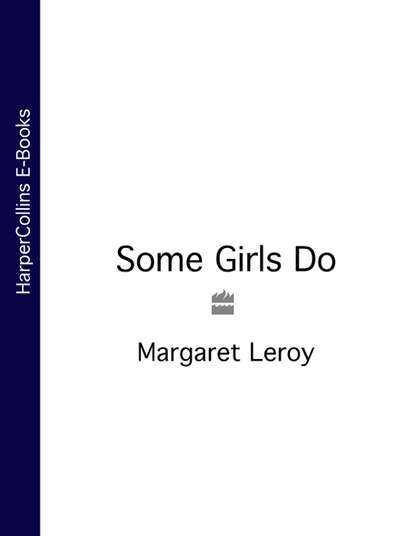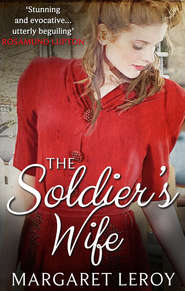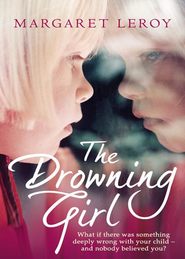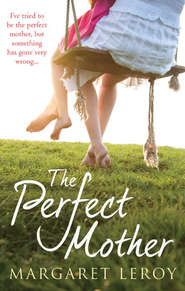По всем вопросам обращайтесь на: info@litportal.ru
(©) 2003-2025.
✖
Some Girls Do
Автор
Год написания книги
2018
Настройки чтения
Размер шрифта
Высота строк
Поля
Another classic story-line concerns a female sexual initiative that is essentially altruistic. The motive here is perhaps too noble to be described as ulterior – but these women do have something in common with women who seduce for laughs or to show men up, in that their motives for making a move are hidden, and have nothing to do with their own pleasure. In these stories, women take sexual initiatives to save somebody.
One of the most widely found folk or fairytale themes is the ‘animal groom’, in which a woman is married to an animal or monster. Here a kiss or act of love initiated by a woman effects a magical metamorphosis. In ‘Hans My Hedgehog’, ‘The Frog Prince’ and ‘Beauty and the Beast’, the heroine kisses or shares her bed with some physically unprepossessing creature, often in response to a request from her father – perhaps in order to set her father free, or to fulfil a pledge made by him. She does it with a sense of repulsion but is pleasantly surprised how it all turns out: the frog becomes a prince and the beast beautiful.
Psychoanalyst Bruno Bettelheim reads a deeper meaning into these stories. For Bettelheim, the animal represents children’s feelings about adult sexuality and adult genitals – the frog, which blows itself out when excited, is a particularly vivid symbol – and the transformation of frog, hedgehog or beast into prince is a metaphor for a psychosexual transformation that must be accomplished if sexual maturity is to be achieved. The story shows that, in order to enjoy sex, ‘the female has to overcome her view of sex as loathsome and animal-like’, so that what was once repellent becomes desirable.
(#litres_trial_promo) In the story, the woman – usually a pubescent girl – initiates without any hope or expectation of pleasure, and has a delightful surprise. Here is one female initiative that has a happy ending – though it wasn’t embarked on with that intent and the woman’s motives are purely altruistic.
Feminist writer Robin Norwood, in her self-help book, Women Who Love Too Much, has a different take on these stories.
(#litres_trial_promo) She sees them as terribly misleading lessons for women, with their implicit promise that women can save and reform unlovely men through the power of their sexual love. She suggests that whenever a woman says, ‘I thought I could save him’, she’s been taken in by the patriarchal propaganda that urges us to love addicted or disturbed or needy men – that urges Beauty to ‘stand by’ the Beast. Intriguingly, the suspicion that there’s some dreadful patriarchal kernel to these stories seems to be shared by today’s canny little girls, who find stories like ‘The Frog Prince’ unacceptably wimpish and favour the Babette Cole version in which the princess’s kiss works the other way round, and the unappealing prince that the princess doesn’t want to marry is turned into a frog.
Here then is our first category of initiating women. These sexual initiatives are purposeful and direct, but the motive has nothing to do with the woman’s own pleasure: she is doing her job, serving her country, setting her father free, exposing a man’s weakness, saving someone, doing her bit for the Russian industrial complex. And, except in the fairytale where her move breaks the spell that bound him or kept him beastly, the men who succumb to the women’s advances come to regret it; they find themselves recruited as spies, in prison, blackmailed, rejected by their women, or made a laughing stock.
BAD WOMEN: Watering the tree of strife
Njal’s Saga is a labyrinthine Icelandic epic that dates from the thirteenth century. It tells the story of Njal and Gunnar and Gunnar’s wife, Hallgerd. As Hallgerd grows into womanhood, she becomes very lovely, with long legs and long silken hair that veils her body and, at first, only Hrut her uncle sees through her: ‘The child is beautiful enough,’ he says, ‘and many will suffer for her beauty; but I cannot imagine how thief’s eyes have come into our kin.’
(#litres_trial_promo)
Hallgerd exemplifies a peculiarly female form of wickedness; she acts covertly, she’s a stirrer. A whispered word from Hallgerd, and storehouses go up in flames, minor slights are brutally avenged, and men come home with their axes covered in blood. Her sexual power, that has men falling over themselves to do what she wants, is part of a wider pattern of wickedness: she ‘waters the tree of strife’. The bad sexual woman goes back a long way.
Fairytales are a particularly rich source of bad sexual women. Feminist commentators on fairytales have noted that the powerful instigating women in the stories we know best are without exception wicked. In Perrault or Grimm, good women are passive, sometimes so passive they’re fast asleep or comatose in glass coffins. The women who get things going are always bad.
For today’s children, these vibrant and alarming presences are most vividly evoked by Disney films. Who are the truly terrifying characters in the Disney films we saw as children – and which today’s children watch so avidly? Marina Warner comments that children find the masculine beasts in fairytales thrilling rather than scary – and certainly children above about three can be rather fond of the Beast in Disney’s Beauty and the Beast, with his shaggy mane, lolloping gait and poignant air of self-pity. But the wicked women in Disney are something else. Some are directly based on fairytale, others are more recently invented but have fairytale resonances – and all of them send small children scuttling behind the sofa. In The Sleeping Beauty there’s the Wicked Fairy, and in 101 Dalmatians Cruella de Vil, who steals puppies to make into fur coats. The Rescuers has Medusa, who sends little Penny down a mine shaft in a bucket to hunt for a diamond. And in Disney’s first film, Snow White, there’s the Wicked Queen, whose baroque savagery makes her the most alarming of all Disney’s creations.
These women are the very embodiment of that ‘return to glamour’ which fashion journalists periodically attempt to foist on the reluctant woman in the street. They dress as vamps. They wear black and red, the sexual colours. Cruella de Vil and Medusa have spiky heels and spaghetti-thin shoulder straps, and the medieval-style villainesses have blood-red lips and fingernails and far too much mascara. For these women, desirability is everything; their aim above all is to go on looking good. This is why they send little girls down mines to look for jewels, or demand that the hearts of pretty teenagers be brought to them in caskets, or trap loveable puppies to turn into fur coats, or put nubile princesses out of the competition for a hundred years. These projects derive their urgency from the fact that these women are ageing and can’t bear it; they seek to hang on to their central role on the sexual stage at a time in the life-cycle when they should be handing over to a younger, more innocent generation. In seeking to present themselves as sexual women when they should be mothers, they go against the natural order. Their concern with appearance is also a sadistic agenda – in that the feelings, safety and even lives of others are sacrificed to the women’s superficial pleasures.
One of the perennially puzzling questions about women who do take sexual initiatives for their own pleasure is why, in our books and films and stories, they are always always bad. Part of the answer may lie here, with Cruella de Vil or the Wicked Queen – in the fact that some of the wickedest sexual women are in stories for children.
The wickedness of the Disney villainesses is very specific. It’s about being horrid to the weakest and most appealing creatures – small cuddly animals and the nicest little girls. It’s about competing sexually with the Princess when you’re old enough to be Queen Mother. It’s the precise opposite of mothering. For the child, this absence of mothering behaviour is the very essence of female badness. And the story makes clear that it’s the woman’s sexuality that drives her to behave in this unnatural way. So from the child’s viewpoint, there’s a profound opposition between nurturant and sexual behaviour in his or her mother.
Freud devoted much attention to children’s horror of the primal scene – the sight of their parents having intercourse. In PsychoDarwinism, Christopher Badcock puts forward a plausible sociobiological explanation for this.
(#litres_trial_promo) He argues that the child doesn’t want her parents to have sex because she doesn’t want them to reproduce anymore. Another brother or sister takes something away from her: she wants to keep everything for herself – the breast milk, the food, the parental care. And because it’s the mother who provides most of the nurturing, it’s the mother’s sexuality rather than the father’s that is particularly problematic for the child. A father can spread his seed around without taking anything away from his own offspring – but a mother’s sex drive inevitably pulls her away from her child.
Some feminist writers such as childbirth guru Sheila Kitzinger have suggested that the absolute division between the maternal and the sexual in women’s lives represents a triumph of patriarchal values.
(#litres_trial_promo) According to this view, patriarchy has taught us to overlook the voluptuous beauty of the pregnant body, lied about the orgasmic delights of giving birth, and tried to deny the powerful sexuality of mothers. Motherhood and sexuality, runs the argument, don’t have to be split and polarized as they are in our society.
This has never made sense to me. The conflict certainly isn’t experienced by women themselves as something that’s externally imposed: it’s felt at a very deep level. When a woman is most wrapped up in her children – when those children are dependent babies – she tends to feel little interest in sex, and the rebirth of her libido as her children become less dependent always involves some distancing from her children. Perhaps she pushes them away a little, or perhaps she’s just acknowledging their need for independence. Either way, she may experience this as a re-assertion of her own ‘selfishness’ and her children will probably see it that way too. This re-discovery of herself as a sexual being may also pull a woman away from her present family towards a new partner, with all the disruption for the child that such a move entails. No wonder children don’t want their mothers to be sexual.
This opposition between mothering and sexual initiating is one of the fundamental principles of sexual behaviour in the natural world. There are some species in which courtship roles are reversed: the female initiates and the male responds.
(#litres_trial_promo) And in all these cases where the female makes the first move in courtship, the male does most of the childcare: he guards the eggs and the young as well, as in some species of birds, or, like some fish, he carries the eggs with him, brooding them in the mouth. Sea-horses reverse roles in a startlingly complete way. The female has a sort of penis, a ‘prehensile ovipositor’, which she uses to inject eggs into the male’s body where they develop: and the female sea-horse actively courts the male. In the 1920s, a biologist observed a courtship in the Crypturellus variegatus, a species of bird in which the male alone incubates the egg and raises the young. He wrote that when the two sexes saw one another, the female ‘gave utterance to a veritable ecstasy of calling’ – while the male gave only ‘a restrained, philosophical exhibition of emotion’.
(#litres_trial_promo)
This broad pattern can also be traced out in human courtship. Just as, in the natural world, female animals which don’t rear the young are more likely to initiate so, too, in human society, it is those women who aren’t looking to bear and rear children as a result of the courtship who are most likely to make the first move.
Maybe the badness of female sexual initiators seems so natural because it hooks into a genuine conflict in the female psyche. Maybe the fairytale villainesses hint at dilemmas that are built into the female sexual life-cycle.
BAD WOMEN TODAY: Get down to business
But this notion of a perennial conflict between our sexuality and our feelings for our children – and specifically between sexual initiating and mothering behaviour – is only part of the story. There must also be something peculiar to our own time about the appeal of wicked female initiators for, recently, in our most popular public fictions, there’s been a positive efflorescence of wicked women who make the first move. The bad sexual woman whose story goes back to Sumer is still doing her stuff down at the multiplex – being a bitch, wickedly scheming, having great sex and, in the end, getting her just deserts. The tremendous commercial success of the films in which these women feature suggests they have something special to say to us today.
In stories for children, the sexual initiative-taking of the bad woman can only be hinted at. In films for adults, we’re left in no doubt as to what she does.
Meredith Johnson in Disclosure attempts to seduce Tom Sanders in her office. She grabs him when he’s making a phone call, snatches the phone away and presses herself against him. ‘Get down to business,’ she says. In Presumed Innocent, Carolyn Polhemus pulls Rusty Sabich by his tie into a dark office: ‘You’re going to be so good,’ she says as she meaningfully removes her earrings. In The Last Seduction, Brigit sticks her hand down the trousers of the man she’s just met in a bar. When she first meets Nick, Catherine Tremell in Basic Instinct says, ‘Have you ever fucked on cocaine, Nick? It’s nice …’: she also famously flashes her pubic hair at a group of policemen – which is about as direct as an indirect initiative can get. Alex in Fatal Attraction doesn’t make the first move: she is asked to dinner by Dan. But she does signal her interest in an affair by saying, ‘I can be very discreet’. And then, when he doesn’t ring after their weekend together, she takes a whole range of follow-up initiatives that might be more typical of men – she rings him at work, rings him at home, buys opera tickets, turns up at his office. Later her initiatives become still less conventional.
These women have all entered the public world on their own terms. They power-dress, they carry briefcases, they understand financial markets and make lots of money. They are also all bad. It isn’t just a question of breaking a few rules and wearing fuck-me shoes. These aren’t just Gutsy Girls who Get Ahead. They are seriously wicked. Catherine Tremell is a serial murderess. Carolyn Polhemus takes bribes, and loses interest in Rusty when she finds he’s less ambitious than she’d like. When Meredith Johnson’s attempt to have sex with Tom backfires, she takes out a sexual harassment suit against him, and the attempt at seduction turns out to have an ulterior motive – to frame him and have him fired for a mistake she’d made. Alex abducts Dan’s child, has a close affinity with Cruella de Vil in her propensity for doing horrible things to cuddly animals – the emotional climax of the film is her boiling of the pet rabbit – and turns up in Dan’s bathroom with a carving knife. And Brigit, by far the most stylish of the bunch, makes off with the money from her husband’s drug deal, kills off a few philandering partners along the way, and then – in a neat inversion of notions of women’s vulnerability to male violence – murders her husband with her Mace spray.
The role sex plays in these stories is the mirror image of its role in the traditional woman’s romance. In Mills and Boon, the heroine doesn’t always enjoy sex – she may well have her first orgasm in bed with the hero – but her whole life is about love, and love is the motor and climax of the plot. In the bad woman stories, it’s the other way round: the women enjoy sex effortlessly – they certainly don’t need hours of delicate fingerwork – but it isn’t the main event. Catherine Tremell may be ‘the fuck of the century’, but what really turns her on is writing books and sticking ice-picks into people. Often a sexual encounter is about something else, a means to an end – as it was for the women with ulterior motives at the start of this chapter. Through sex, the women in these films further their career ambitions, get material for their next book, or find someone to take the rap for their crimes. They are using the men.
When these stories are aimed at women, they’re funny. We laugh – and we want her to win. The story taps into that part of every woman that makes her grin when she says ‘Lorena Bobbitt’. The Last Seduction is a woman’s film. And we identify with Brigit: we long to smoke with her kind of style, to speak with that husky rasp, to be so coolly unburdened by conscience. And Brigit gets away with it triumphantly in the end: the final shot in the film shows her reclining in her stretch limo as she languidly burns the last piece of evidence incriminating her.
But when the story is aimed at men, it is horror, and the woman is punished. Fatal Attraction is a male fantasy – and here the initiating woman meets a bloody death.
These stories are powerful: they shape our thinking. Fatal Attraction, in particular, has been a stunningly successful piece of modern myth-making. It’s as fantastic as 101 Dalmatians – but people talk about it as though it were real. Sara told me, ‘Quite honestly I think women who ask men out are punished. It’s like Fatal Attraction – I think that’s what happens.’ Geoff said, ‘If you have an affair, you need to be sure you can trust the girl – you don’t want to end up like Fatal Attraction’. Sara and Geoff don’t question the film’s veracity; Alex seems plausible to them. As Adrian Lyne, the film’s director, apparently remarked, ‘Everybody knows a girl like Alex.’
(#litres_trial_promo)
The notion that Alexes are everywhere involves two distortions of thinking – an over-reaction to women’s new assertiveness, and an over-valuation of sexuality as the key to personality.
There’s often a ludicrous over-reaction to small gains for women. As Susan Brownmiller comments, ‘ “The women are taking over” is a refrain many working women hear from their male colleagues – after one or two women are promoted at their company, but while top management is still solidly male. In newsrooms, white male reporters routinely complain that only women and minorities can get jobs – often at publications where women’s and minorities’ numbers are actually shrinking …’
(#litres_trial_promo) So, too, the fact that women are asserting themselves a bit more sexually gives rise to fantasies that the world is full of glossy and alarming women who help themselves to the sex they want without regard for the destructive consequences.
In every system of oppression, what is kept down is fantasized about and feared. Studies of colonization have looked at the way the qualities of the oppressed group or race, especially their sexuality and aggression, are exaggerated and then feared: hence, for instance, notions about the super-potency of black men. So, in the fantasies that underlie these films, the kind of sexual initiative that women might be taking – asking for the touches they want, perhaps – becomes a shocking or destructive sexual assertion: Meredith sexually harassing Tom, Brigit putting her hand down a man’s trousers in a public place.
The second distortion that drives these fantasies is the over-valuation of sexual behaviour as a true litmus test of personality – especially for women. In the films, the women’s sexual behaviour is part of a gestalt. Their assertiveness in bed is one manifestation of their assertiveness in every area of their lives. The woman who makes the first move in her sexual relationships puts herself first in other areas too, and the woman who disregards the traditional sexual script is deficient in other traditional female qualities. Like Hallgerd in the old Icelandic saga with her ‘thief’s eyes’, she takes things that rightfully belong to others.
Sex is sometimes seen as the key to personality for men as well. Hence the demands for the resignations of adulterous politicians: if they cheat on their wives, runs the argument, they surely can’t be trusted to govern the country well. But it’s also recognized that for men sex isn’t the whole story. Oskar Schindler, for instance, is venerated as one of the great altruists of the twentieth century, for the hundreds of lives he saved during the Holocaust. He treated women badly: he was openly unfaithful to his wife, seduced his secretaries, and doubtless created a lot of misery all round. He fascinates us as a flawed human being who was also capable of startling love and courage.
But a woman’s sexuality is never seen as a thing apart. It’s impossible to imagine a female Oskar Schindler – a woman who was thoughtless and promiscuous in her sexual life, but also revered for doing great good.
The bad woman script takes it as axiomatic that a woman’s sexual assertiveness is part of a wider assertiveness or even aggressiveness in her psychological make-up. But this is a distortion. A woman’s courtship behaviour doesn’t essentially correlate with the rest of her personality. When I talked to women about their courtship styles, I simply didn’t find that the more assertive women were more likely to ask men out.
Certainly there may be connections between a woman’s willingness to take direct initiatives and other aspects of her sexuality. Among the women I talked to, the few women who sometimes made the first move tended to be good at asking for what they wanted in bed, turned on by visual sexual imagery, and attracted to younger, less affluent, less powerful men. And women with a very indirect style at the start of courtship tended to be attracted to powerful or older men, to be turned on by masochistic fantasies and to find it hard to ask for what they wanted in bed. Indirect women were also more likely than women who sometimes made the first move to have had sex forced on them at some time.
But there were no consistencies at all with the women’s behaviour at work or in other parts of their lives – no connections between how they’d rate on sexual assertiveness and the rest of their personality and functioning. I met women with high-status careers and an air of great self-assurance who had the most reticent and evasive courtship styles – and quiet women with conventional views and unremarkable jobs who were married to men they’d asked out.
Female sexual initiatives are not part of a gestalt – and the fact that a woman makes the first move doesn’t reveal anything about other aspects of her personality. And it certainly doesn’t mean she is more likely to assert herself to accomplish evil ends.
The bad sexual woman may be great entertainment – but there’s no psychological truth in her. Adrian Lyne is wrong. None of us knows any girls like Alex.
BEAUTIFUL PREDATORS: She took me to her faery grot
There is a sub-class of bad sexual women who are scarcely women at all – women who, in a more profound way than Sofia the man-trapper or ‘Lizzie James’, are not what they seem.









